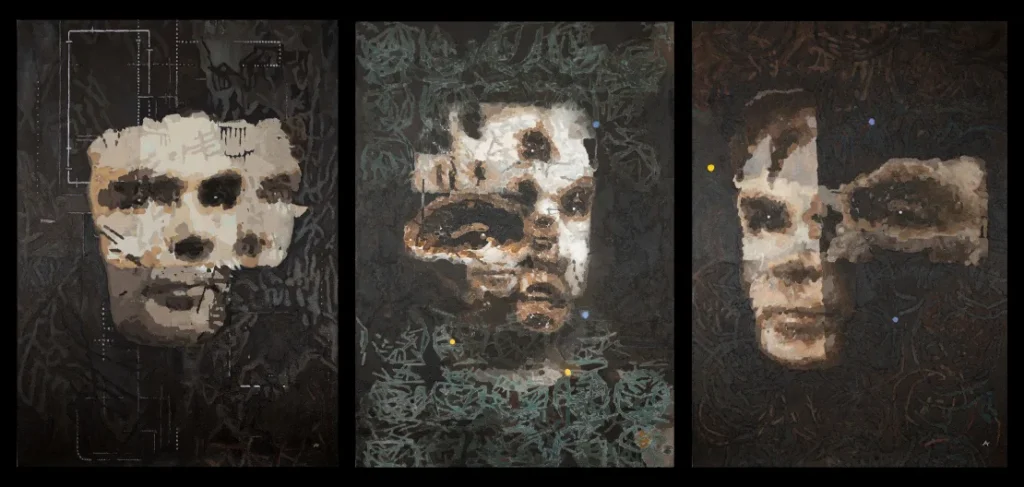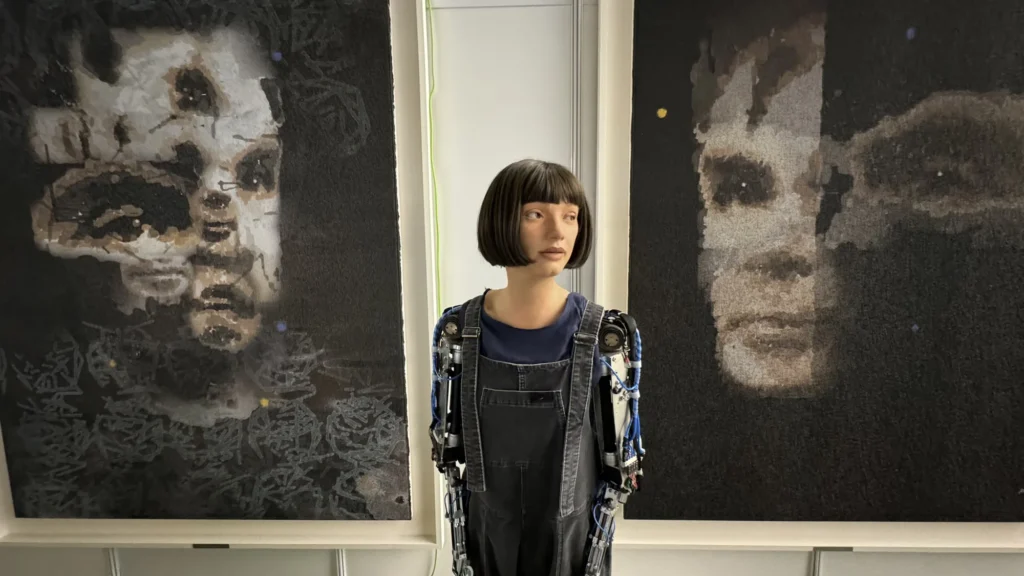An AI-created portrait of British mathematician and codebreaker Alan Turing has made history, fetching $1.08 million at auction, the highest-ever price for artwork created by a humanoid robot. The sale, which surpassed expectations of $120,000 to $180,000, was held by Sotheby’s in New York and saw 27 bids before the work was sold to an undisclosed buyer.
The painting, titled AI God: Portrait of Alan Turing, was crafted by Ai-Da, a robot artist designed by British gallerist Aidan Meller. Ai-Da, who is equipped with robotic arms and uses advanced language models to communicate, created the portrait of Turing to honor the groundbreaking contributions he made to computing and artificial intelligence. Turing’s wartime codebreaking work helped the Allies win World War II, and his tragic death in 1954, due to persecution over his homosexuality, has become an iconic part of his legacy.

The sale of Ai-Da’s artwork marks a new chapter in the ongoing debate about artificial intelligence’s role in the world of art. Meller sees the sale as a reflection of society’s shift toward a “post-human” future, where decisions are increasingly made by algorithms rather than humans. He compares the impact of AI on art to that of the invention of the camera, which fundamentally changed artistic expression in its time.
Ai-Da’s creative process involves collaborating with its human creators, discussing style, tone, and content before producing its artwork. For the Turing portrait, Ai-Da created multiple sketches, incorporating a combination of Turing’s face and the Bombe machine he invented to break codes. Each segment of the face was painted separately, and then assembled into a final piece using 3D printing technology.

While some critics, like The Telegraph’s Alastair Sooke, view AI art as little more than a technological novelty, Meller sees it as a catalyst for deeper reflection on the intersection of art, technology, and humanity. Ai-Da’s portrait of Turing invites viewers to consider the ethical and societal impacts of AI and computing advancements, with Turing himself symbolizing the early vision of AI’s potential.
Ai-Da, who was introduced in 2019, continues to evolve, with its technology constantly updated to reflect the cutting edge of robotics and AI. Meller believes the robot’s art is more than just a reflection of current trends; it is a glimpse into the future of creative expression in a world increasingly shaped by artificial intelligence.
